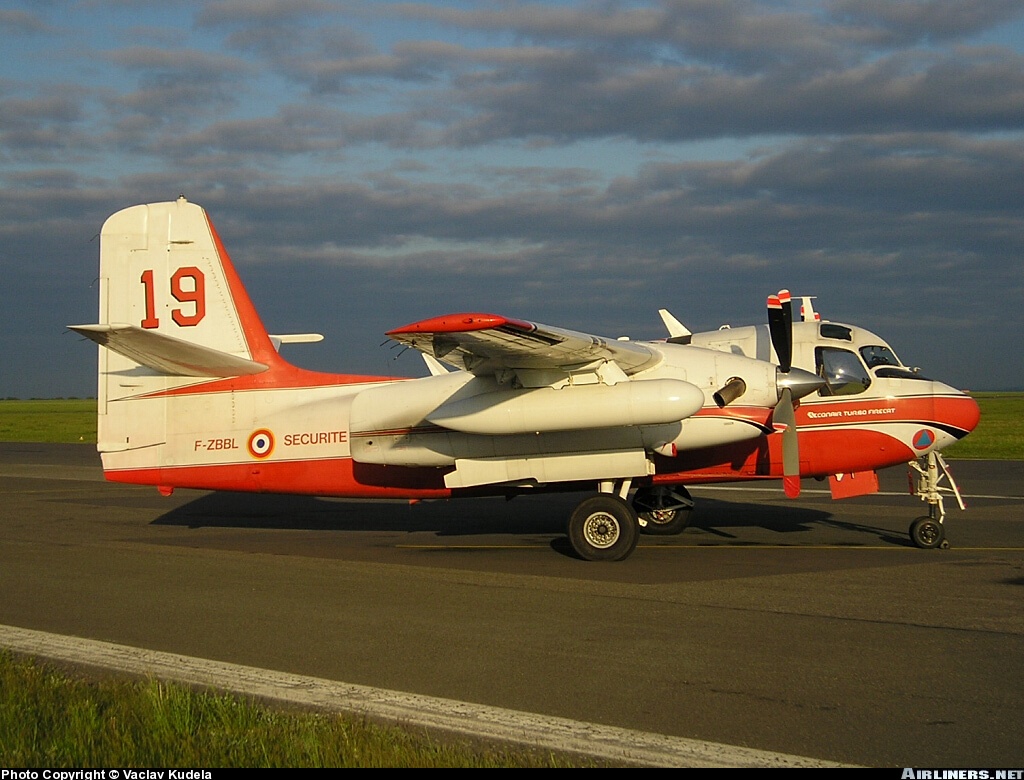Country
code
Var
Crash of a Cessna 525 CitationJet CJ2+ in Saint-Tropez
Date & Time:
Jun 6, 2018 at 1310 LT
Registration:
D-IULI
Survivors:
Yes
Schedule:
Figari - Saint-Tropez
MSN:
525A-0514
YOM:
2013
Crew on board:
1
Crew fatalities:
Pax on board:
1
Pax fatalities:
Other fatalities:
Total fatalities:
0
Captain / Total hours on type:
1234.00
Circumstances:
The aircraft departed Figari-Sud-Corse Airport on a positioning flight to Saint-Tropez-La Môle, carrying one passenger and one pilot. Weather conditions at destination were poor with ceiling at 1,800 feet and rain. The pilot contacted Nice Approach and was cleared to descend to 6,000 feet and to report over EM for an approach to La Môle Airport Runway 24. On final approach, the pilot was unable to establish a visual contact with the runway and initiated a go-around procedure. Few minutes later, he completed a second approach and landed the airplane 200 metres past the runway threshold at a speed of 136 knots. Spoilers were deployed but the airplane was unable to stop within the remaining distance. It veered slightly to the left, departed the end of the runway, crossed a river and came to rest against an embankment located about 100 metres past the runway end. The pilot escaped unhurt while the passenger was slighlty injured. The aircraft was damaged beyond repair.
Probable cause:
The landing distance of the airplane on a wet runway as defined in the Airplane Flight Manual (AFM) performance tables are not compatible with the length of runway available at La Môle Aaerodrome. When preparing the flight, the pilot used the flight record provided by the operator ProAir to determine landing performance. Landing distance on a wet runway presented in the file increased that on a dry runway by 15%. The 15% increase on a wet runway can only be used in conjunction with the increase of 60% imposed in commercial operation, otherwise it may be inappropriate. The value resulting from the calculation was, in this case, wrong and less than the value indicated in the aircraft flight manual. The pilot probably did not use the EFB application for the calculation of performance or the flight manual to verify this value. The pilot thus undertook the flight on the basis of erroneous performance values, without realizing that he could not land at this aerodrome if the runway was wet. In addition, during the final approach, the speed of the aircraft was greater than the speed approach reference and the approach slope was also greater than the nominal slope, which resulted in an increase in the landing distance. During the landing roll, the aircraft exited the runway longitudinally at a speed of 41 kt. The pilot failed to stop the aircraft until it does not violently collide with obstacles at the end of the track.
Contributing factors:
- The operator's use of the same operations manual for two different types of operations;
- The absence in the operations manual of a calculation method, coefficient and safety margin for the calculation of performance in non-commercial transport;
- Lack of knowledge by the pilot and the operator of the method of calculation of landing performance in non-commercial transport;
- The lack of indication in the operations manual that the landing performances at La Môle aerodrome are limiting in case of a wet or contaminated runway.
Contributing factors:
- The operator's use of the same operations manual for two different types of operations;
- The absence in the operations manual of a calculation method, coefficient and safety margin for the calculation of performance in non-commercial transport;
- Lack of knowledge by the pilot and the operator of the method of calculation of landing performance in non-commercial transport;
- The lack of indication in the operations manual that the landing performances at La Môle aerodrome are limiting in case of a wet or contaminated runway.
Final Report:
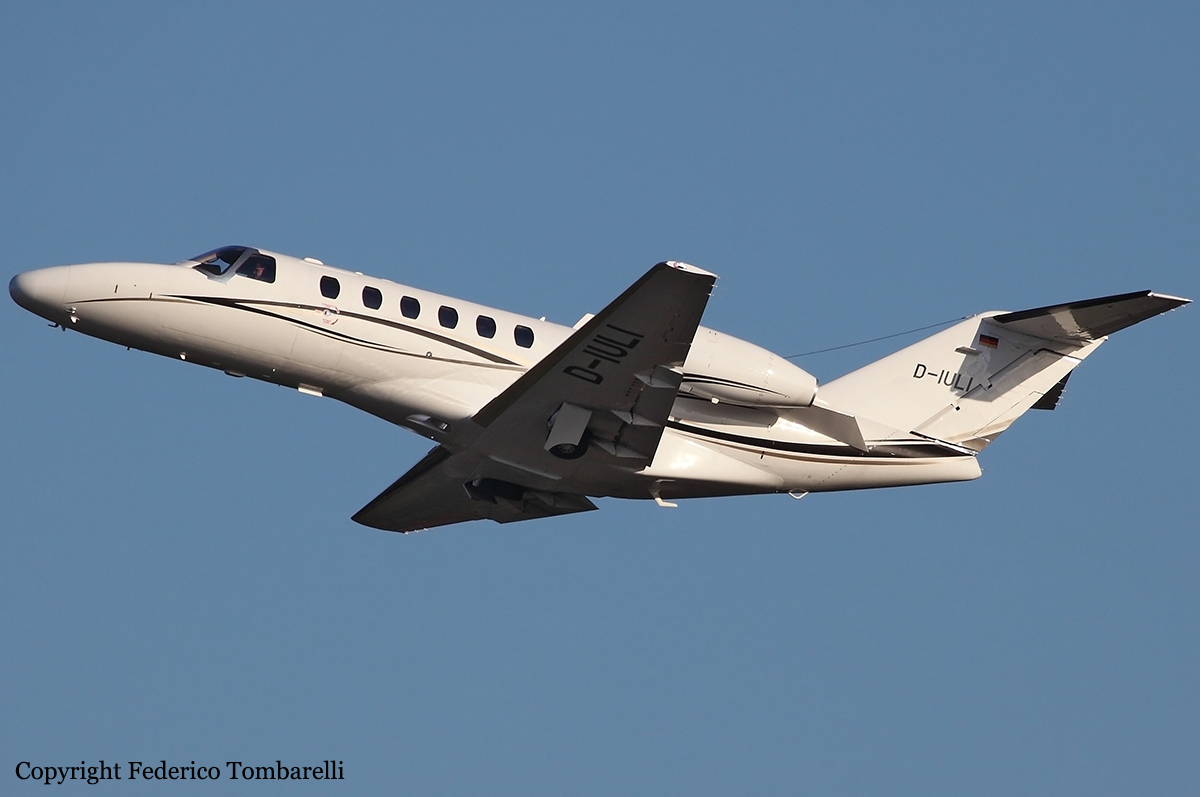

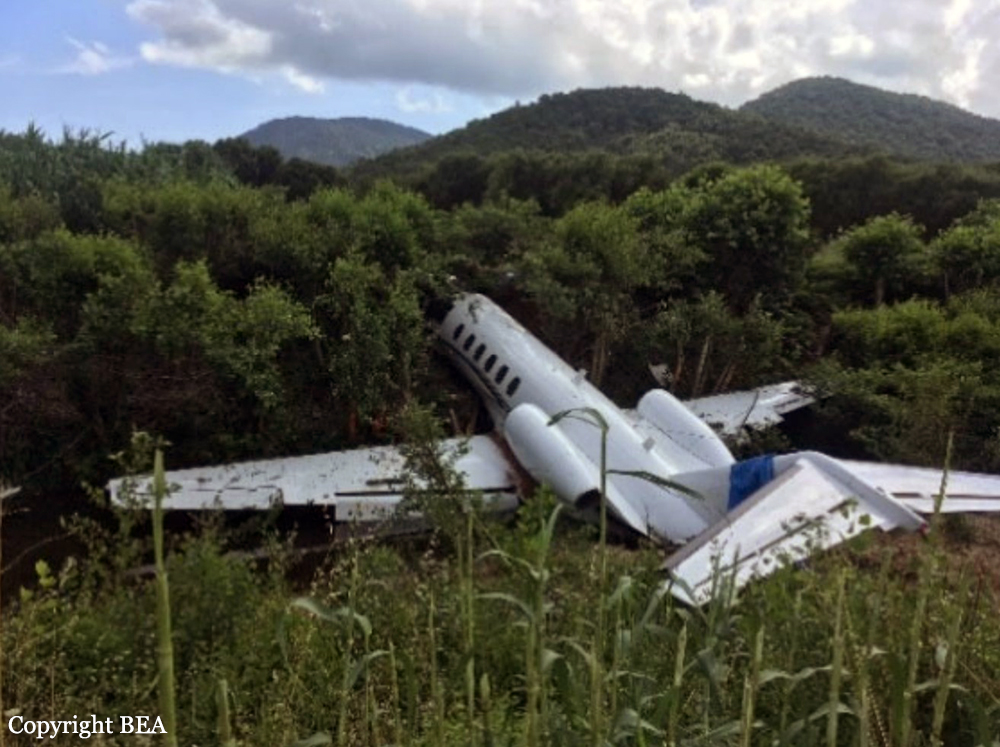

Crash of a Gulfstream GIV in Le Castellet: 3 killed
Date & Time:
Jul 13, 2012 at 1518 LT
Registration:
N823GA
Survivors:
No
Schedule:
Nice - Le Castellet
MSN:
1005
YOM:
1987
Flight number:
UJT823
Crew on board:
3
Crew fatalities:
Pax on board:
0
Pax fatalities:
Other fatalities:
Total fatalities:
3
Captain / Total hours on type:
690.00
Copilot / Total hours on type:
556
Aircraft flight hours:
12210
Aircraft flight cycles:
5393
Circumstances:
The crew, consisting of a Captain and a co-pilot, took off at around 6 h 00 for a flight between Athens and Istanbul Sabiha Gokcen (Turkey). A cabin aid was also on board the aeroplane. The crew then made the journey between Istanbul and Nice (06) with three passengers. After dropping them off in Nice, the aeroplane took off at 12 h 56 for a flight to Le Castellet aerodrome in order to park the airplane for several days, the parking area at Nice being full. The Captain, in the left seat, was Pilot Monitoring (PM). The copilot, in the right seat, was Pilot Flying (PF). Flights were operated according to US regulation 14 CFR Part 135 (special rules applicable for the operation of flights on demand). The flight leg was short and the cruise, carried out at FL160, lasted about 5 minutes. At the destination, the crew was cleared to perform a visual approach to runway 13. The autopilot and the auto-throttle were disengaged, the gear was down and the flaps in the landing position. The GND SPOILER UNARM message, indicating nonarming of the ground spoilers, was displayed on the EICAS and the associated single chime aural warning was triggered. This message remained displayed on the EICAS until the end of the flight since the crew forgot to arm the ground spoilers during the approach. At a height of 25 ft, while the aircraft was flying over the runway threshold slightly below the theoretical descent path, a SINK RATE warning was triggered. The PF corrected the flight path and the touchdown of the main landing gear took place 15 metres after the touchdown zone - that’s to say 365 metres from the threshold - and slightly left of the centre line of runway 13(3). The ground spoilers, not armed, did not automatically deploy. The crew braked and actuated the deployment of the thrust reversers, which did not deploy completely(4). The hydraulic pressure available at brake level slightly increased. The deceleration of the aeroplane was slow. Four seconds after touchdown, a MASTER WARNING was triggered. A second MASTER WARNING(5) was generated five seconds later. The nose landing gear touched down for the first time 785 metres beyond the threshold before the aeroplane’s pitch attitude increased again, causing a loss of contact of the nose gear with the ground. The aircraft crossed the runway centre line to the right, the crew correcting this by a slight input on the rudder pedals to the left. They applied a strong nose-down input and the nose gear touched down on the runway a second time, 1,050 metres beyond the threshold. The speed brakes were then manually actuated by the crew with an input on the speed brake control, which then deployed the panels. Maximum thrust from the thrust reversers was reached one second later(6). The aircraft at this time was 655 metres from the runway end and its path began to curve to the left. In response to this deviation, the crew made a sharp input on the right rudder pedal, to the stop, and an input on the right brake, but failed to correct the trajectory. The aeroplane, skidding to the right(7), ran off the runway to the left 385 metres from the runway end at a ground speed of approximately 95 knots. It struck a runway edge light, the PAPI of runway 31, a metal fence then trees and caught fire instantly. An aerodrome firefighter responded quickly onsite but did not succeed in bringing the fire under control. The occupants were unable to evacuate the aircraft.
Probable cause:
Forgetting to arm the ground spoilers delayed the deployment of the thrust reversers despite their selection. Several MASTER WARNING alarms were triggered and the deceleration was low. The crew then responded by applying a strong nose-down input in order to make sure that the aeroplane stayed in contact with the ground, resulting in unusually high load for a brief moment on the nose gear. After that, the nose gear wheels deviated to the left as a result of a left input on the tiller or a failure in the steering system. It was not possible to establish a formal link between the high load on the nose gear and this possible failure. The crew was then unable to avoid the runway excursion at high speed and the collision with trees. The aerodrome fire-fighter, alone at the time of the intervention, was unable to bring the fire under control after the impact. Although located outside of the runway safety
area on either side of the runway centre line, as provided for by the regulations, the presence of rocks and trees near the runway contributed to the consequences of the accident.
The accident was caused by the combination of the following factors:
- The ground spoilers were not armed during the approach,
- A lack of a complete check of the items with the ‘‘before landing’’ checklist, and more generally the UJT crews’ failure to systematically perform the checklists as a challenge and response to ensure the safety of the flight,
- Procedures and ergonomics of the aeroplane that were not conducive to monitoring the extension of the ground spoilers during the landing,
- A possible left input on the tiller or a failure of the nose gear steering system having caused its orientation to the left to values greater than those that can be commanded using the rudder pedals, without generating any warning,
- A lack of crew training in the ‘‘Uncommanded Nose Wheel Steering’’ procedure, provided to face uncommanded orientations of the nose gear,
- An introduction of this new procedure that was not subject to a clear assessment by Gulfstream or the FAA,
- Failures in updating the documentation of the manufacturer and the operator,
- Monitoring by the FAA that failed to detect both the absence of any updates of this documentation and the operating procedure for carrying out checklists by the operator.
area on either side of the runway centre line, as provided for by the regulations, the presence of rocks and trees near the runway contributed to the consequences of the accident.
The accident was caused by the combination of the following factors:
- The ground spoilers were not armed during the approach,
- A lack of a complete check of the items with the ‘‘before landing’’ checklist, and more generally the UJT crews’ failure to systematically perform the checklists as a challenge and response to ensure the safety of the flight,
- Procedures and ergonomics of the aeroplane that were not conducive to monitoring the extension of the ground spoilers during the landing,
- A possible left input on the tiller or a failure of the nose gear steering system having caused its orientation to the left to values greater than those that can be commanded using the rudder pedals, without generating any warning,
- A lack of crew training in the ‘‘Uncommanded Nose Wheel Steering’’ procedure, provided to face uncommanded orientations of the nose gear,
- An introduction of this new procedure that was not subject to a clear assessment by Gulfstream or the FAA,
- Failures in updating the documentation of the manufacturer and the operator,
- Monitoring by the FAA that failed to detect both the absence of any updates of this documentation and the operating procedure for carrying out checklists by the operator.
Final Report:
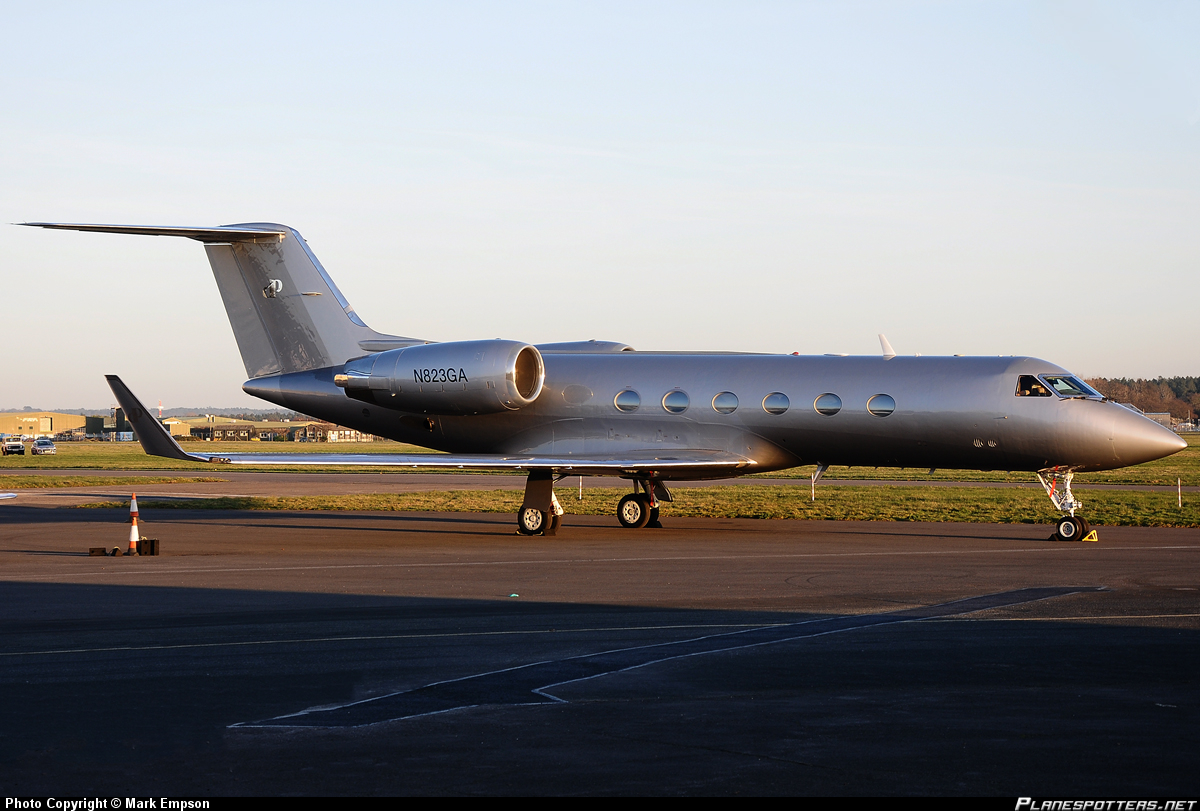

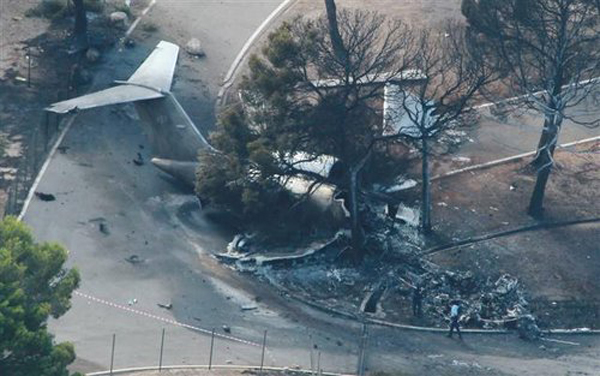
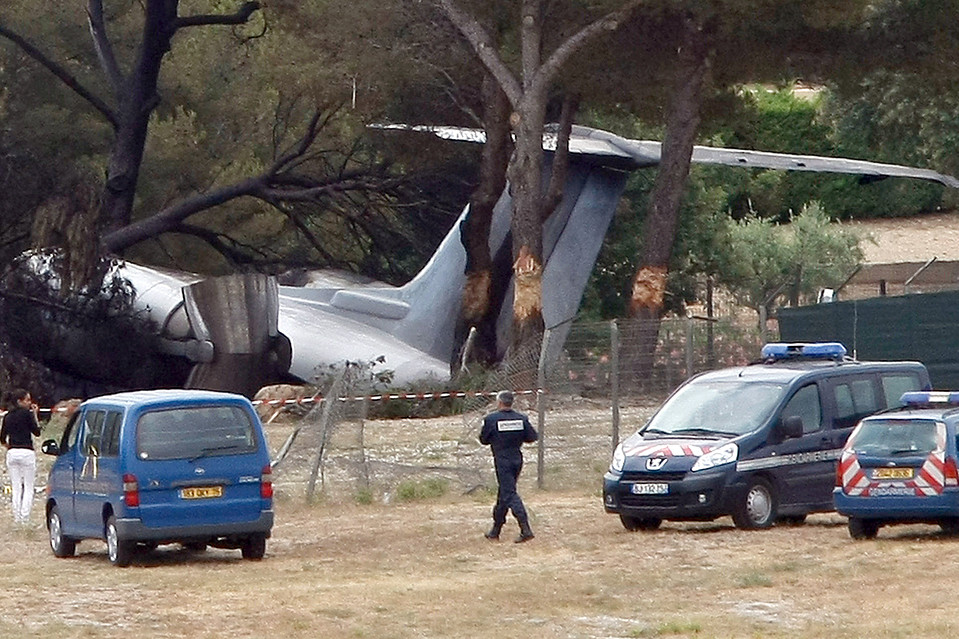
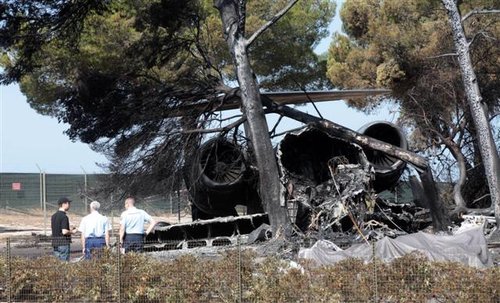
Crash of a Socata TBM-700 in Cuers
Date & Time:
Feb 10, 2012 at 1715 LT
Registration:
D-FALF
Survivors:
Yes
Schedule:
Maribo – Cuers
MSN:
157
YOM:
1999
Crew on board:
1
Crew fatalities:
Pax on board:
2
Pax fatalities:
Other fatalities:
Total fatalities:
0
Captain / Total hours on type:
6000.00
Circumstances:
The pilot took off at around 14 h 45 from Maribo aerodrome (Denmark) bound for Cuers. He filed an IFR flight plan that he cancelled(2) at 17 h 15 near the St Tropez VOR (83). He explained that he had overflown the installations at Cuers at 1,500 ft and started an aerodrome circuit via the north for runway 11. He was visual with the ground and noted the presence of snow showers. He reckoned that these conditions made it possible to continue the approach. At about 600 ft, he went into a snow shower. At about 400 ft, he noticed that the horizontal visibility was zero and that he had lost all external visual references. He tried to make a go-around but didn’t feel any increase in engine power. At about 200 ft, he saw that he was to the right of the runway and decided to make an emergency landing. The aeroplane struck the ground on the right side of the runway. It slid for 150 metres and swung around before stopping. All three occupants escaped with minor injuries and the aircraft was damaged beyond repair.
Probable cause:
The accident was linked to the pilot’s to continue his approach under VFR, even though the meteorological conditions made it impossible. Coming out of an area of thick snowfall at 200 ft, he was unable to control the bank angle or the flight path of the aeroplane. The investigation was unable to determine if this bank angle was linked to inadequate control during an attempt to go around without external visual references(3) or a late attempt to reach the centre of the runway. Overconfidence in his abilities to pass through a snow shower, as well as a determination to land, may have contributed to the accident.
Final Report:
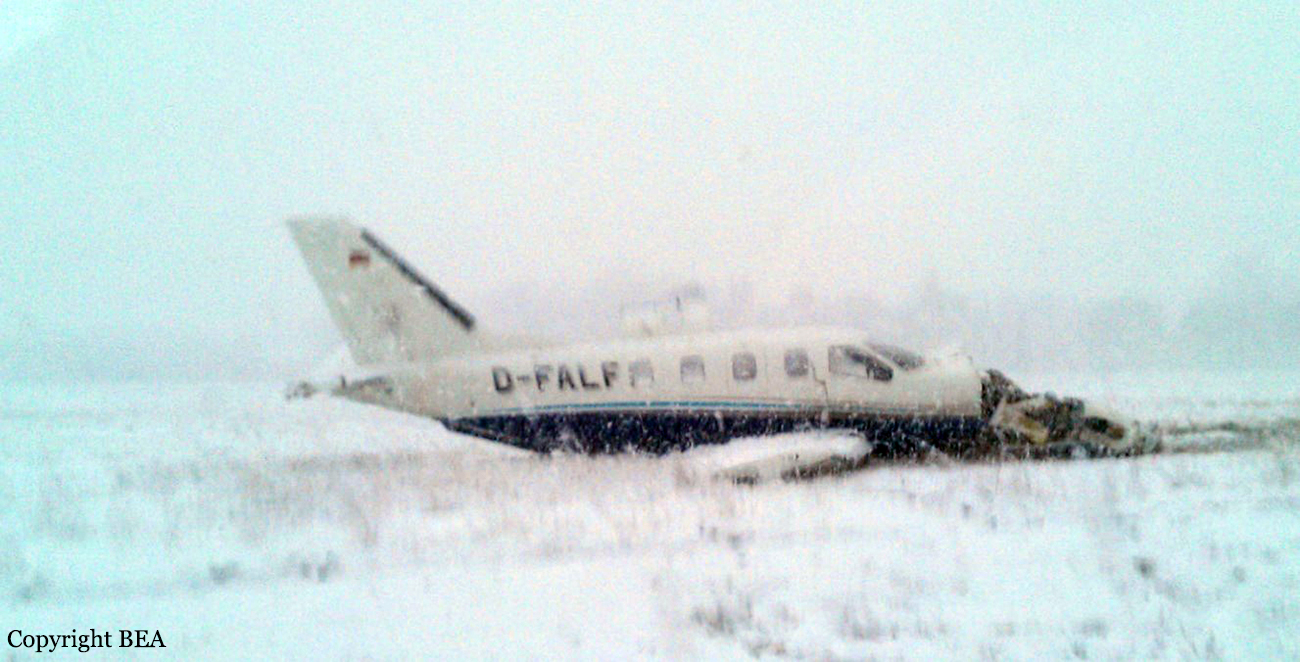
Crash of a Grumman US-2B Tracker in Taradeau
Date & Time:
Jul 19, 2005 at 1745 LT
Registration:
F-ZBBL
Survivors:
Yes
Schedule:
Marseille - Marseille
MSN:
626
YOM:
1958
Flight number:
Pélican 19
Crew on board:
1
Crew fatalities:
Pax on board:
0
Pax fatalities:
Other fatalities:
Total fatalities:
0
Circumstances:
The aircraft departed Marseille-Marignane Airport in the afternoon and was dispatched in the area of Taradeau where a forest was on fire. Two helicopters, two others Tracker and five Canadair CL-415 were also dispatched to the same zone. The pilot was approaching the area on fire when he momentarily lost visual contact with the ground. The aircraft impacted trees and crashed, bursting into flames. The pilot escaped with minor injuries while the aircraft was destroyed by fire.
